 While having a New Year’s Resolution to “lose more weight” isn’t a bad thing, it’s not easy. And depending on how much you want to lose and in what time frame, it’s not always realistic. To benefit your overall health without focusing on your weight, try setting (and sticking to) some of the following nutrition-related resolutions going into 2023.
While having a New Year’s Resolution to “lose more weight” isn’t a bad thing, it’s not easy. And depending on how much you want to lose and in what time frame, it’s not always realistic. To benefit your overall health without focusing on your weight, try setting (and sticking to) some of the following nutrition-related resolutions going into 2023.
Eat More Fruits and Vegetables
About 80 percent of the US population doesn’t meet their fruit intake recommendations, while close to 90 percent do not meet their suggested vegetable intake. The Dietary Guidelines for Americans encourage adults to consume around 2–2.5 cups of fruit per day and 2.5–3 cups of vegetables per day. Although this may be a lot for some, simply aiming to eat one additional fruit or vegetable each day is still beneficial.
Drink More Water
Water is essential for the body. It aids in digestion, regulates body temperature, cushions joints, and helps remove wastes from the body. Not drinking enough water increases the risk for dehydration, which can cause dizziness, confusion, fatigue, headaches and dry skin and mouth. A general rule of thumb is to consume at least 1 milliliter of water for every 1 calorie consumed. For example, if you consumed 2,200 calories per day, you would want to aim to consume 2,200ml, or 2.2 liters of water per day.
Consume Less Alcohol
Excess alcohol intake has both short- and long-term health consequences. In the short term, drinking too much can result in risky behaviors, injury, or violence. Over time, excessive alcohol use can lead to the development of high blood pressure and heart disease, certain cancers, weakened immune system, learning and memory issues, and social problems. Most professional health organizations such as the CDC and WHO agree that men should limit alcohol intake to less than two drinks/day, while women should aim for less than one drink per day.
Decrease Sodium Intake
The Dietary Guidelines for Americans suggest consuming less than 2,300mg of sodium per day to promote optimal health and reduce the risk of heart disease, the leading cause of death for adults in the US. However, in the US, the average sodium intake for individuals older than 1 year of age is ~3,400mg/day. Strategies for reducing sodium intake include cooking at home more often, using herbs and spices to season foods rather than salt, and consuming fewer packaged/prepared foods.
Limit Saturated Fat Consumption
Like sodium, excess saturated fat consumption is linked to an increased risk for heart disease. The Dietary Guidelines for Americans suggest limiting saturated fat intake to less than 10% of daily calories, while the American Heart Association recommends even less, at less than 5–6% of daily calories from saturated fat per day. Saturated fat is found in most animal-based foods such as beef, poultry, pork, full-fat dairy products, and coconut and palm oils. To cut back on saturated fat, reduce your intake or eat smaller portions of the foods listed above and replace them with healthier options, such as fat-free or low-fat dairy and lean cuts of meat.
This blog was written by Lindsey Recker, MS, RD, NIFS Registered Dietitian. To learn more about the NIFS bloggers, click here.


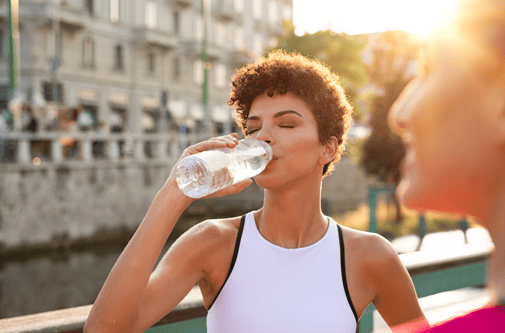
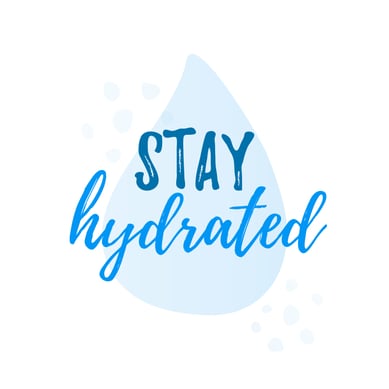 What Do Your Kidneys Do?
What Do Your Kidneys Do?
 Did you know the human body is composed of about 50 to 60 percent water? Throughout the day, your body uses and loses fluid by way of natural body processes such as sweating, breathing, creating saliva, making and excreting urine, and having bowel movements. Losing more water than you consume can quickly lead to dehydration, which typically presents as excess thirst, headache, dizziness, weakness, digestion problems, and/or nausea. These symptoms typically resolve once you rehydrate your body.
Did you know the human body is composed of about 50 to 60 percent water? Throughout the day, your body uses and loses fluid by way of natural body processes such as sweating, breathing, creating saliva, making and excreting urine, and having bowel movements. Losing more water than you consume can quickly lead to dehydration, which typically presents as excess thirst, headache, dizziness, weakness, digestion problems, and/or nausea. These symptoms typically resolve once you rehydrate your body.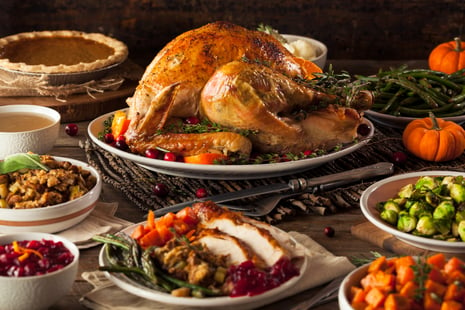 The holidays are HERE! We all know what happens around the holidays. I see two extremes in my practice as a Registered Dietitian:
The holidays are HERE! We all know what happens around the holidays. I see two extremes in my practice as a Registered Dietitian: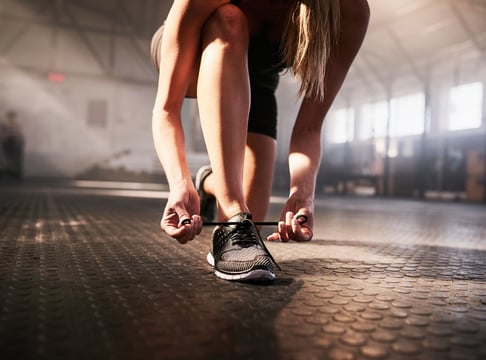 Do you remember the last time you went on an extended vacation, came back home, jumped into the gym and your favorite class and thought you could pick right back up where you left off? You might remember feeling like you were not going to make it through the class and were so sore for days on end. And that was just after a vacation consisting of a long rest, relaxation, and food freedom. Just think what you may encounter once you return to your favorite class or training group after two to three months of quarantine.
Do you remember the last time you went on an extended vacation, came back home, jumped into the gym and your favorite class and thought you could pick right back up where you left off? You might remember feeling like you were not going to make it through the class and were so sore for days on end. And that was just after a vacation consisting of a long rest, relaxation, and food freedom. Just think what you may encounter once you return to your favorite class or training group after two to three months of quarantine. 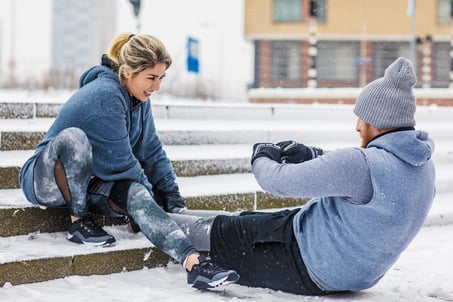 There is no debate that it’s easier to make healthier choices and lose weight in the spring and summer months. The sun is shining and warm, the days are longer, and you feel motivated to get outdoors and be active. But when the cold, harsh months of winter come around, all motivation goes out the window. Let’s take a look at ways to keep your motivation high and get over those hurdles of temptation.
There is no debate that it’s easier to make healthier choices and lose weight in the spring and summer months. The sun is shining and warm, the days are longer, and you feel motivated to get outdoors and be active. But when the cold, harsh months of winter come around, all motivation goes out the window. Let’s take a look at ways to keep your motivation high and get over those hurdles of temptation.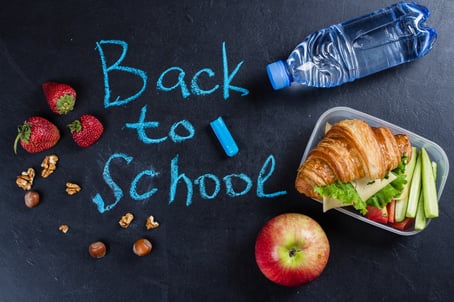 Whether you are starting your first year in college, sending your kids off to school, or are teaching classes this school year, make sure that your nutrition stays at the top of your priority list. It can be easy to get bogged down in your day-to-day routine and quickly lose sight of your goals. Follow these steps to help you stay on track this year.
Whether you are starting your first year in college, sending your kids off to school, or are teaching classes this school year, make sure that your nutrition stays at the top of your priority list. It can be easy to get bogged down in your day-to-day routine and quickly lose sight of your goals. Follow these steps to help you stay on track this year.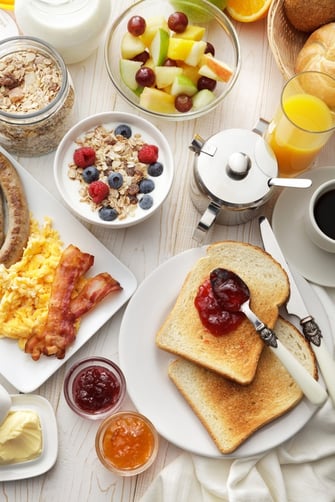 There are so many diets out there that it can be confusing as to what you should follow and who you should listen to when it comes to healthy and balanced eating. If you aren’t sure where to begin to change your current routine, take a look at these tips that Registered Dietitians (the experts in healthy habits) recommend.
There are so many diets out there that it can be confusing as to what you should follow and who you should listen to when it comes to healthy and balanced eating. If you aren’t sure where to begin to change your current routine, take a look at these tips that Registered Dietitians (the experts in healthy habits) recommend.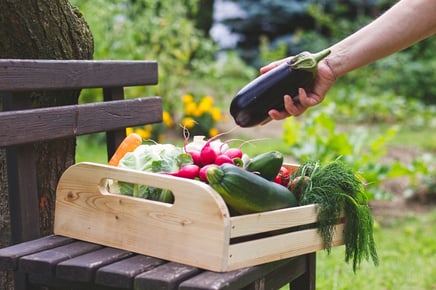 It is important to get in the nine recommended servings of fruits and veggies each day. This can definitely be challenging. However, in the summertime when produce is readily available all over the country, this is the time to make it a priority to reach that goal! These fruits and veggies are also at their nutrient peak, which is more reason to load up and fill your plate with these colorful items!
It is important to get in the nine recommended servings of fruits and veggies each day. This can definitely be challenging. However, in the summertime when produce is readily available all over the country, this is the time to make it a priority to reach that goal! These fruits and veggies are also at their nutrient peak, which is more reason to load up and fill your plate with these colorful items!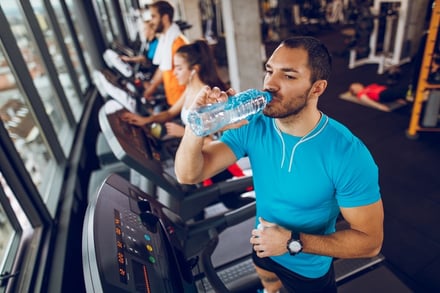 One thing that I’m sure you have heard is the importance of
One thing that I’m sure you have heard is the importance of